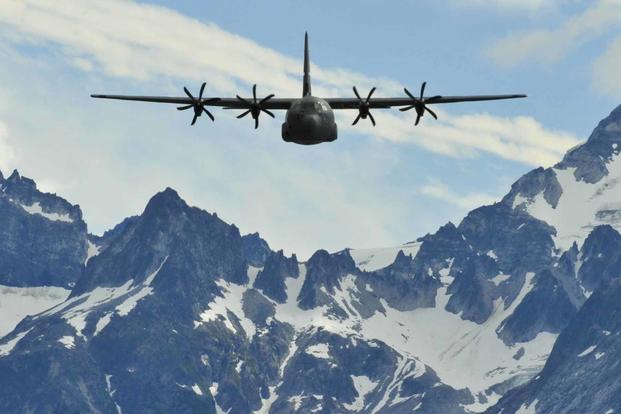The U.S. Air Force is partnering with a Boston-based technology company to test using an autonomous co-pilot on its cargo transport planes, a step toward one solution for the service as it faces pilot shortages and automation begins playing a larger role in the military.
Merlin Labs, an aviation technology company, said last week that it had reached a deal to test putting its commercial autonomous pilot technology on the Air Force's C-130J "Super Hercules" cargo planes.
The company said in a July 13 press release that the system will allow "crew reduction," with the potential for "uncrewed flight."
Read Next: Air Force Open to Sending A-10s to Ukraine for Fight Against Russia
Merlin Labs' technology is software, which can take over steering an aircraft during turbulence and storms but also can conduct takeoffs and landings in addition to the traditional role of "autopilot" in maintaining a course in flight.
Merlin Labs CEO Matthew George told Military.com that the introduction of the software "paves the way to totally uncrewed flight."
While the technology won't detect obstacles such as birds in the sky or cars on a runway, it is a notable step toward eventual automation.
Air Force Vice Chief of Staff Gen. David Allvin told the House Armed Services Committee's panel on readiness this week that the service needs around 1,600 pilots to fill its current shortage.
News of increased reliance on computer algorithms in the cockpit comes as airmen raised the alarm this week over reports that the Air Force is considering reducing the crew on its Boeing KC-46 Pegasus refueling tankers from three to two during certain dangerous missions.
Traditionally, a refueling mission is manned with at least a pilot, co-pilot and a boom operator.
The possibility of a smaller crew aboard those planes was first noted on the Air Force amn/nco/snco Facebook page, a popular spot for airmen to vent, and was met with swift criticism.
"Terrible idea, the flight deck is designed for two qualified pilots," one commenter wrote. "In an emergency you need both of them up there."
George said having something like an autonomous co-pilot could help reduce some of those worries and provide for more flexibility for pilots to fly other more crucial missions.
But in the military, the integration of robotic or autonomous technology into jobs and missions that have typically been done by service members frequently raises eyebrows.
Earlier this year, the Portland Air National Guard's 142nd Security Forces Squadron became the first Guard unit in the nation to receive a new "robot dog" -- officially named the Q-UGV made by Ghost Robotics. The unit planned to test the technology for surveillance and base security operations.
But many online compared the Q-UGV to the flocks of killer dog robots from the "Metalhead" episode of "Black Mirror," in which a woman runs through the desert to escape the clutches of the autonomous villains.
Henrik Christensen, director of the Institute for Contextual Robotics at the University of California San Diego, told Military.com in a previous interview that it's unlikely that we'll see widespread replacement of many military jobs by robots or AI in the near future.
"I think the trend we're seeing is we're trying to automate what are called the dirty, dull and dangerous tasks," Christensen said. " ... but we're still going to need people."
-- Thomas Novelly can be reached at thomas.novelly@military.com. Follow him on Twitter @TomNovelly.
Related: Portland Air National Guard Unit Is First to Test Out Robot Dog for Base Security












